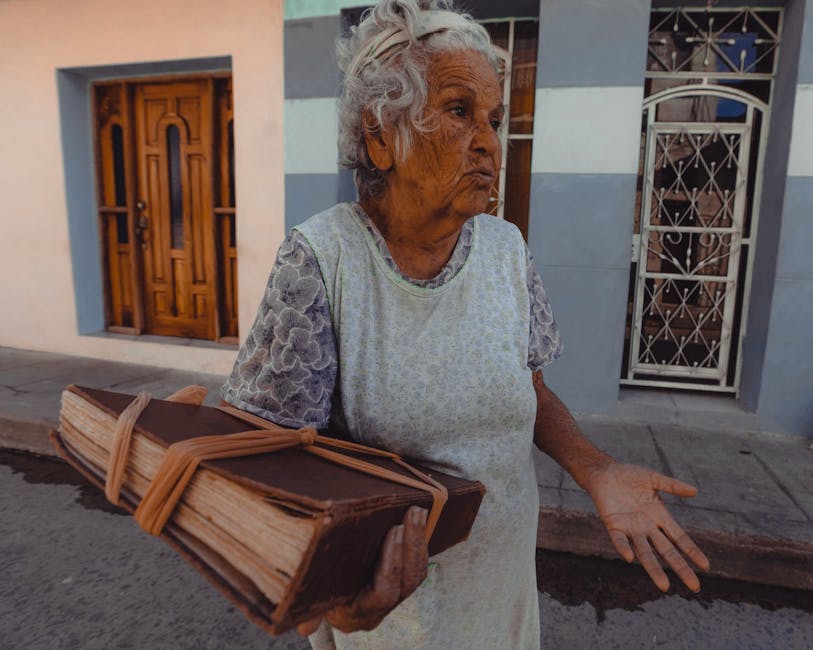The Power of Real Stories
Factual storytelling hasn’t just survived the content boom—it’s thrived. Part of that is fatigue: audiences are tired of being sold to, manipulated, or dazzled with flash at the cost of substance. Real stories cut through because they feel grounded. Raw. Unfiltered in a way fiction rarely achieves. When someone shares their truth, people lean in.
But it’s not just about facts. It’s about emotional honesty. What resonates in 2024 isn’t perfectly packaged drama—it’s personal stakes, vulnerability, nuance. Vlog-style docs, stripped-down interviews, and day-in-the-life reels are proof. Viewers don’t need high drama to feel something. They just need a reason to care.
In that sense, personal narratives are the great equalizer. Whether it’s a refugee rebuilding life in a new country or a teen reconciling with their identity, stories rooted in human experience cross borders. They remind us we’re not alone—and that someone else’s truth might echo our own.
Real storytelling works because it’s not trying too hard. It’s just showing what’s there. And sometimes, that’s more than enough.
Formats That Hit Hard
In 2024, the divide between long-form and short-form documentary styles has sharpened. Each serves a different purpose—and a different audience. Short-form docs, often under 15 minutes, thrive on social media and mobile platforms. They deliver emotional or informational punches quickly, ideal for scroll-happy viewers. Perfect for raising awareness or spotlighting a single voice without losing attention.
On the other side, long-form content—especially docu-series—has become the format of choice for streaming platforms. These don’t just tell stories, they build worlds. With room to stretch out, creators can follow threads across time, bring in multiple perspectives, and explore nuance that short formats can’t touch. As binge culture holds strong, audiences are investing in these sustained stories more than ever.
Interestingly, the one-hour special is making a quiet comeback. Not the bloated two-part events of the past, but tight, purposeful pieces: one hour, one subject, one powerful message. These stand-alone works are giving viewers something long enough to matter but focused enough to finish in one sitting—and remember.
Vloggers and filmmakers alike are experimenting across these formats, often within the same project. Attention spans haven’t shrunk as much as people think. What’s changed is patience for filler. If it’s tight, human, and real—it lands.
Top Subject Trends in 2024
Documentaries are digging deeper this year. Gone are the days when abstract issues were enough to carry a story. In 2024, viewers want specifics—real people, real stakes, and real change. That’s why subjects like social justice, personal identity, and climate resilience are at the front of the pack. These aren’t just buzzwords; they’re lifelines for audiences looking to make sense of a shifting world.
The spotlight’s moving away from celebrities and polished pundits. Instead, it’s landing on everyday people doing quiet, hard things—nurses, teachers, teenagers pushing for clean energy. The unfiltered, the overlooked, the ones without perfect lighting or press kits—they’re holding attention by showing up as they are. Authenticity isn’t a trend anymore. It’s the standard.
Alongside this rise, there’s a quieter but growing movement: the return of the arts. Stories centered on painters rediscovering culture after war, musicians preserving heritage, and performers fighting erasure are finding hungry audiences. Underrepresented voices—across race, region, and identity—are being put front and center. Not as side notes. As the main event.
These subject choices aren’t random. They reflect what people care about when the noise clears. Stripped-down, personal, high-stakes storytelling is what’s resonating. And it’s what’s going to last.
How Documentaries Are Evolving
Today’s documentaries aren’t sticking to a single playbook. Creators are blending formats—splicing reenactments with animation and archival footage—to keep viewers locked in. This isn’t just artsy layering; it’s tactical storytelling. Each element fills a gap: reenactments bring emotion, animation explains the abstract, and archival clips ground the story in truth.
Interactivity is gaining ground too. Viewers can now steer the narrative, choosing different outcomes or timelines. It’s not gimmickry—it’s agency. People want to feel involved, not just informed. Think: doc meets video game with a purpose.
Then there’s the mobile-first revolution. Audiences aren’t waiting to watch on big screens. They’re watching five-minute chapters on phones, cut vertical, optimized for taps and swipes. These lean edits are sharp, purposeful, and built for speed without losing heart.
Bottom line: stories aren’t just told anymore—they’re built to be experienced.
The Role of Platforms
Streaming Giants Are Shaping the Landscape
Major platforms continue to act as powerful gatekeepers and amplifiers for documentary content, each shaping the genre in unique ways:
- Netflix leads with global-scale reach, investing in bold, cinematic documentaries often centered around social movements, personal triumphs, and cultural deep-dives.
- Amazon Prime Video tends to focus on issue-driven stories with a polished production style, creating visibility for both emerging and established filmmakers.
- YouTube fosters accessibility and immediacy, making it ideal for grassroots documentaries, experimental forms, and serialized releases without institutional oversight.
These platforms influence narrative structure, audience expectations, and distribution models by highlighting certain themes, formats, and production values over others.
Niche Platforms, Big Impact
While mainstream players dominate audience share, smaller platforms are carving out meaningful space for documentaries with specific lenses:
- Topic and CuriosityStream are designing highly curated libraries around history, science, and intellectual curiosity.
- DAFilms, Omeleto, and Cinemarket support independent and international voices, offering a stage for underrepresented and experimental work.
- Subscription services for educators and activists are enabling access to documentaries with direct social or instructional relevance.
These alternatives allow filmmakers to connect with audiences who are deeply invested, even if the numbers are smaller.
A Democratized Era for Indie Storytellers
Perhaps the biggest shift is how independent creators are finding and building their audience outside of traditional systems:
- Low-barrier tools—smartphones, editing apps, and self-distribution platforms—have made it possible to create broadcast-quality docs on a tight budget.
- Social media and newsletter-driven communities give creators direct access to fans and backers.
- Crowdfunding and revenue-share models (e.g., Patreon, Ko-fi, and Substack) are enabling more creators to stay independent, while still monetizing their work.
This decentralization marks a true democratization of documentary storytelling—where creativity, not just credentials, determines reach.
Production Shifts and Smart Budgets
Documentary filmmaking in 2024 isn’t about big crews and bottomless budgets—it’s about precision, scrappiness, and creativity. Better gear is more accessible than ever. A solid 4K camera, drone, and prosumer mic setup can produce broadcast-ready visuals without sinking tens of thousands. Filmmakers today stretch every dollar, leaning on editing finesse and tight storytelling instead of flashy effects.
Crowdsourced stories and funding models are proving powerful. Viewers want more than a product—they want to be part of the journey. From early-access cuts on Patreon to Kickstarter campaigns that actually shape the narrative arc, engagement begins long before a documentary drops.
And then there’s the rise of the multitool filmmaker. Names in the credits start repeating because they’re doing it all. Shooting, editing, color grading, marketing—sometimes even composing the score. It’s not about being a jack of all trades just for the sake of it. It’s about control, cohesion, and making the story exactly what it needs to be, with whatever tools and time you’ve got.
Amplifying Reach Through Cross-Media
Documentaries are no longer confined to the screen. In 2024, successful doc projects are increasingly part of broader cross-media ecosystems—expanding their reach, extending their impact, and deepening audience connection.
Extending the Conversation with Podcasts & Newsletters
A documentary’s narrative doesn’t have to end with the credits. Many creators are launching companion podcasts and email newsletters that:
- Dive deeper into behind-the-scenes stories
- Feature expert analysis and interviews with subjects
- Keep the audience engaged between releases
This cross-platform engagement helps build loyal communities and creates educational value beyond passive viewing.
Purposeful Partnerships: Activists and Educators
Documentary films are finding new life (and value) through partnerships with activist organizations and educational institutions. These collaborations:
- Help frame the film around actionable change
- Extend reach through real-world events, classrooms, and campaigns
- Provide legitimacy and distribution opportunities beyond traditional media
Whether it’s a high school using a film in its curriculum or a nonprofit tying it into a fundraising drive, these partnerships embed documentaries directly into meaningful spaces.
Branded Documentaries Done Right
When executed authentically, branded documentaries have the power to align corporate purpose with memorable storytelling. The most impactful examples:
- Focus on human narratives first, brand messaging second
- Spotlight social causes that genuinely connect with the company’s mission
- Are made with credible creative control—often via independent filmmakers
Rather than overt marketing, these films offer subtle brand awareness while building trust with audiences who seek authenticity.
Together, these cross-media strategies are turning documentaries into dynamic, living projects that educate, inspire, and activate far beyond the final frame.
Strong Voices Breaking Through
The new face of documentary filmmaking isn’t coming from the usual places, and that’s the point. A wave of storytellers with roots outside traditional media is shaking up the genre—and bringing voices to the mic that audiences have been missing.
Take Mavis Delgado, a first-generation Colombian-American who turned a camera on her own neighborhood in Queens. Her stripped-down debut, “Linea Directa,” captures the daily lives of undocumented delivery workers with such clarity that Netflix picked it up within weeks of its self-funded release. Then there’s Koji Tanaka, blending his background in street art and digital design to create documentaries that feel more like visual poems than standard issue narratives.
Meanwhile, voices from Indigenous, Black, and diasporic communities aren’t just entering the field—they’re leading it. These filmmakers use storytelling not only to document but to rebuild. Their work reframes histories, challenges assumptions, and reconnects viewers with cultural identities that have long been filtered or ignored. What’s powerful isn’t just the subject matter. It’s who’s telling the story, and how their lens reshapes reality.
The result? Documentaries that resonate deeper. These creators aren’t chasing awards or algorithms. They’re pushing for truth, space, and belonging. And in 2024, that’s what’s cutting through the noise.
Looking Ahead
The line between experiencing a documentary and living it is starting to blur. AR and VR aren’t just hype—they’re turning raw storytelling into something you can walk through, listen to, or interact with. Expect to see creators drop viewers into refugee camps, coral reefs, or protest marches, not just observe from a screen but feel the context firsthand. It’s not for spectacle. It’s about immersion with purpose.
The next wave of documentaries isn’t content to just inform or inspire. They’re built to activate. More filmmakers are designing projects that push for measurable change—a petition, a donation, a shift in policy. These are docs that don’t wrap up neatly. They push you out of passivity.
Real stories aren’t slowing down. They’re digging in—focusing on connection, not noise. The future doesn’t look like a detached voiceover and slow zooms. It reads more like a conversation that sticks with you, one you keep thinking about long after the screen goes dark.
Explore more media innovation trends in our feature on variety shows: Variety Shows Bringing Innovation to TV Screens




